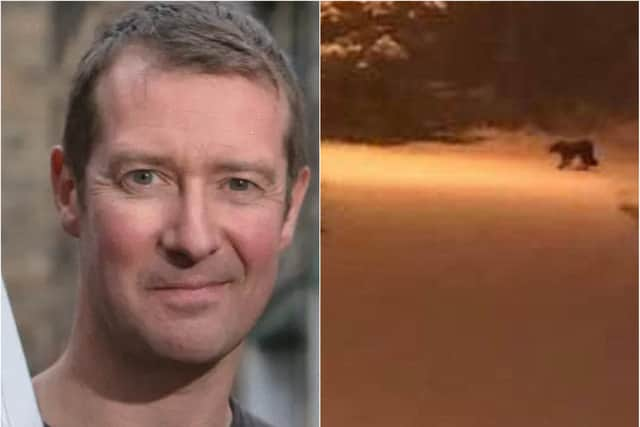'Big Cats' in the Lothians: Edinburgh businessman appeals for information
and live on Freeview channel 276
‘Big cat’ sightings are not unusual in the Lothians, despite not being native to this country, with cases going back decades, and now an Edinburgh business owner has decided to collect, record and monitor all sightings to find a pattern.
Paul Macdonald, 42, who runs an Edinburgh armoury, became interested in Scotland’s mysterious big cat sightings when he experienced his own as a young boy.
Advertisement
Hide AdAdvertisement
Hide AdPaul, who grew up in the West Highlands, explains: “I saw a big cat when I was on the train to school in 1982.


“It was quite a close sighting, thankfully I was safe on the train, but it was this that inspired me.”
Over the years, Paul came across many cases of big cat sightings not just in Scotland, but across the UK.
With big cats not being native to Scotland, and all evidence of existence being anecdotal, and no photo providing the definite proof, collating accurate information won’t be easy.
Advertisement
Hide AdAdvertisement
Hide AdPaul adds: “Several witnesses have told me that they are worried about being ridiculed, but they are happy to come forward when they know that I’m taking them seriously.
“I’ve been pleasantly surprised with the response to the request for information.
“People have been mostly positive.
“Recording the sightings means that I can accurately map them to find appropriate areas to put trail cameras, as well as work out specific habitats that they might live in.”
There are many theories about how the big cats came to roam wild in the Lothian and Borders countryside, and Paul claims the most credible theory is related to the Dangerous Wild Animals Act in 1976, which put restrictions on people who wanted to keep exotic animals, including wild cats.
Advertisement
Hide AdAdvertisement
Hide AdPaul explained: “These restrictions included an expensive licence and new equipment for keeping exotic animals which a lot of people couldn’t afford, so a lot of the animals were released.
“We have seen an increase in sightings in recent decades.”
The specific breed identified by those who have allegedly seen the wild animals include predominantly the Puma and the Panther.
“They are more adaptable to different environments” claims Paul, adding: “Just in case this might cause concern, to date, there have been no attacks on humans.
“These animals tend to shy away from humans.”
For anyone who wants to get in touch with Paul to report a sighting, he asked that you email him on [email protected]
Advertisement
Hide AdAdvertisement
Hide AdThank you for reading this story on our website. While I have your attention, I also have an important request to make of you.
In order for us to continue to provide high quality and trusted local news on this free-to-read site, I am asking you to also please purchase a copy of our newspaper.
Our journalists are highly trained and our content is independently regulated by IPSO to some of the highest standards in the world. The dramatic events of 2020 are having a major impact on many of our local valued advertisers and consequently the advertising that we receive. We are now more reliant than ever on you helping us to provide you with news by buying a copy of our newspaper.
Thank you
Joy Yates
Editorial Director
Comment Guidelines
National World encourages reader discussion on our stories. User feedback, insights and back-and-forth exchanges add a rich layer of context to reporting. Please review our Community Guidelines before commenting.